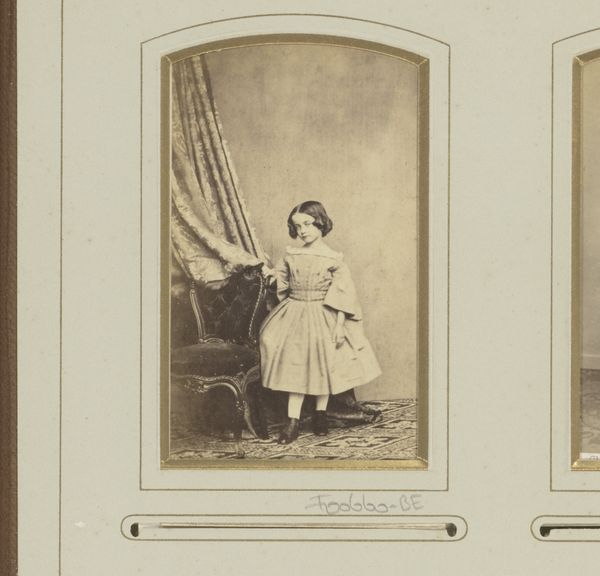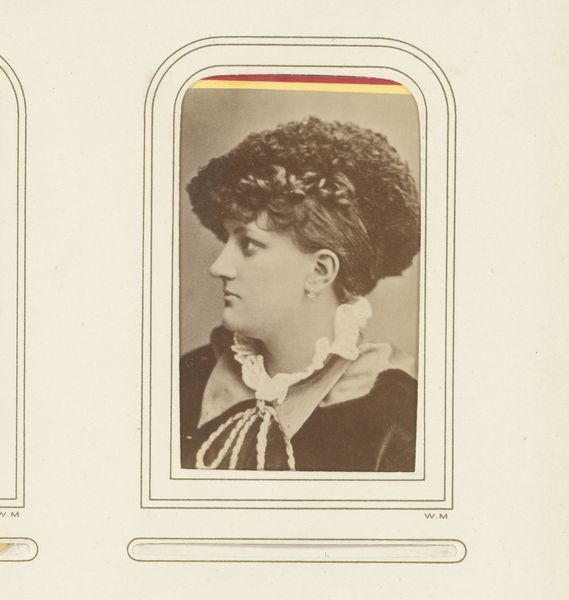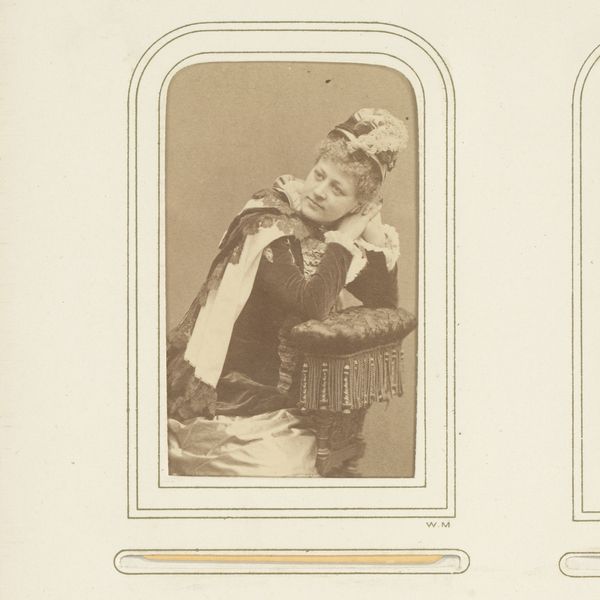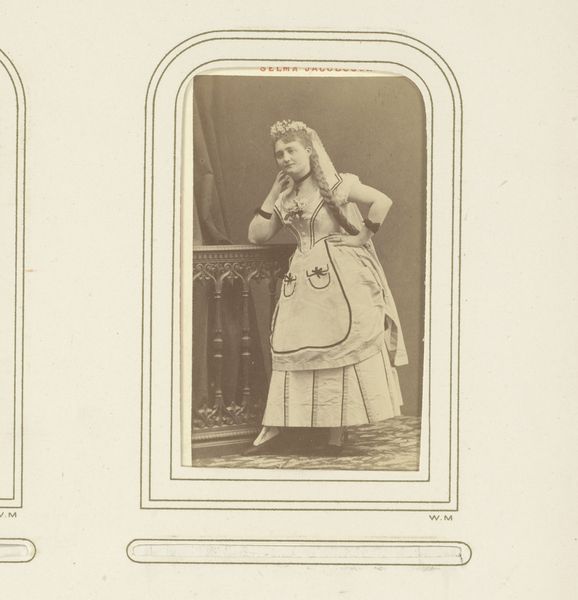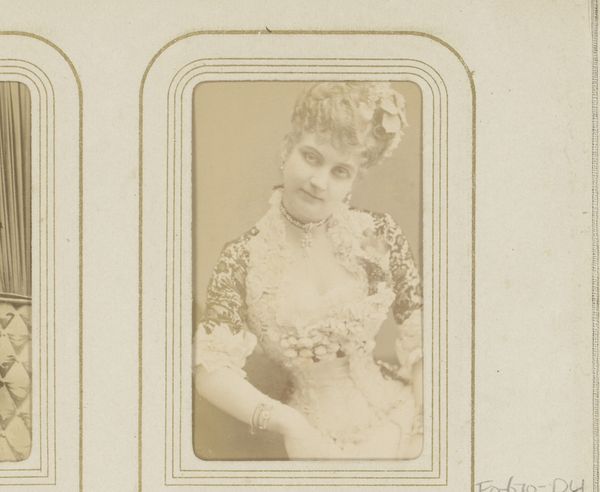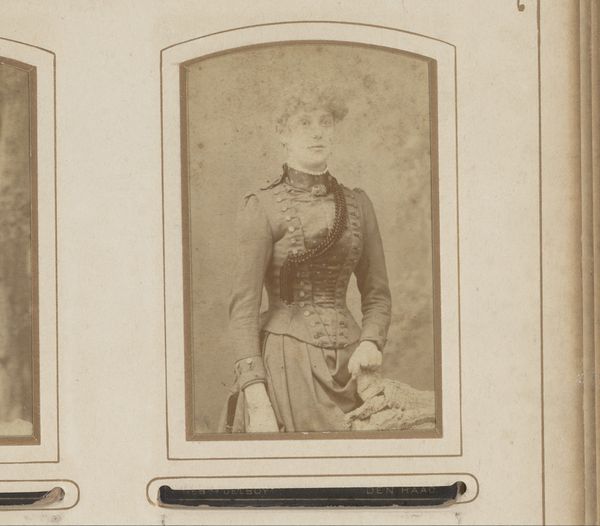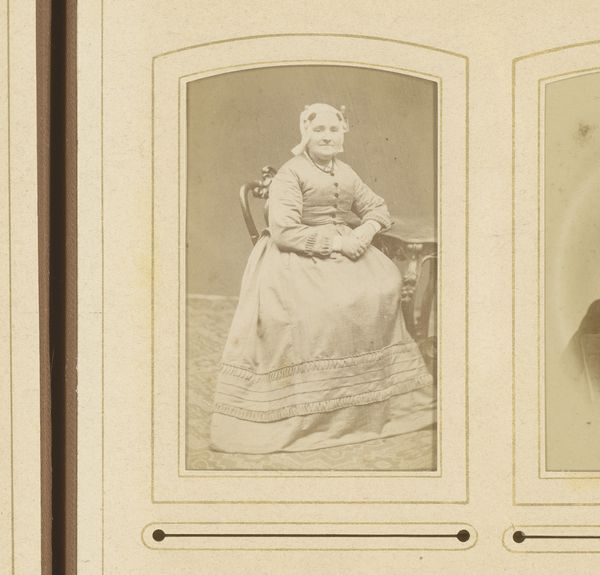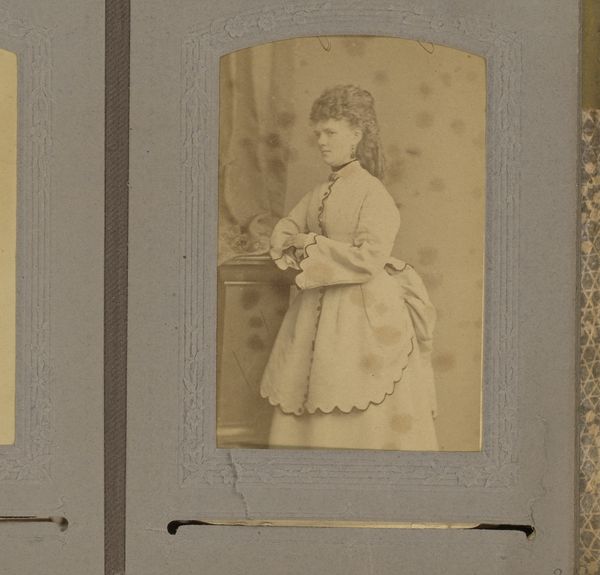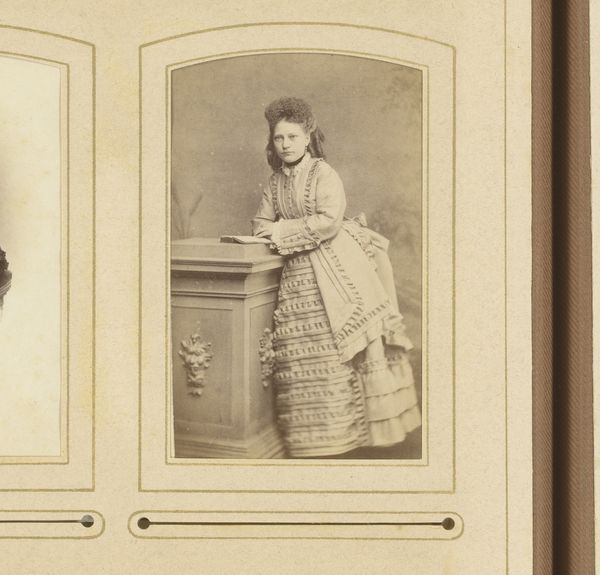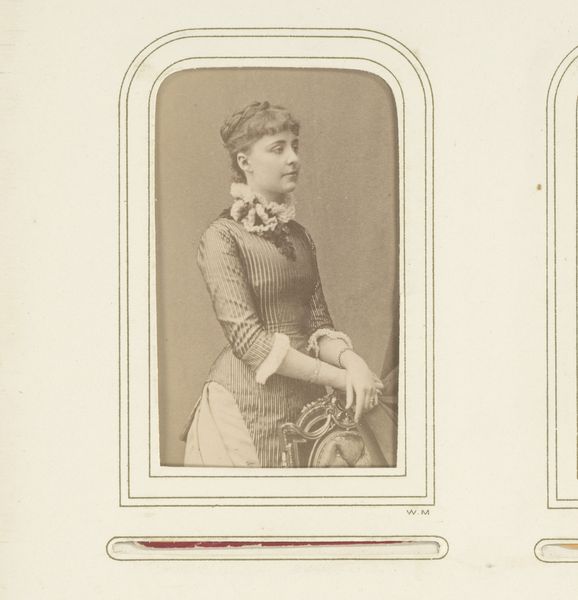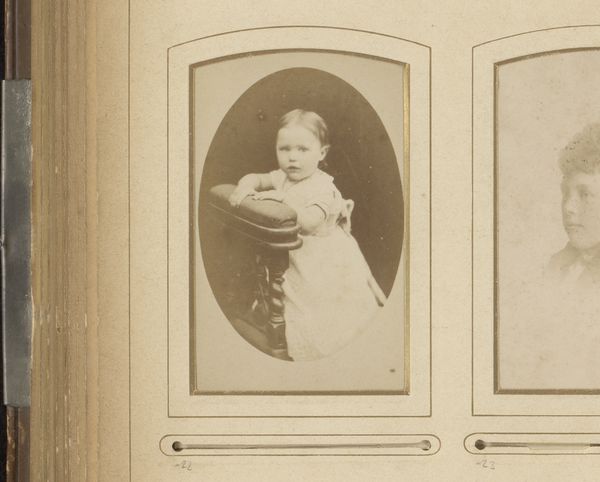
daguerreotype, photography
#
portrait
#
16_19th-century
#
daguerreotype
#
photography
#
old-timey
#
19th century
#
warm-toned
#
nude
Dimensions: height 84 mm, width 51 mm
Copyright: Rijks Museum: Open Domain
Curator: This is a daguerreotype portrait dating from 1870-1880, believed to be made by the studio of Vaury et Cie. The piece is titled "Portret van Zulma Gaite". Editor: My initial impression is of contained drama. The warm-toned image presents the subject in sharp detail against a muted background. The composition emphasizes verticality through her stance and the adjacent column. Curator: Indeed. It's fascinating to consider what this photograph communicates about Zulma Gaite herself and the society she inhabited. The style of dress and jewelry could indicate her status or perhaps her profession as a performer during the period. The pose she is holding projects strength but also makes reference to historical concepts of classical beauty and portraiture. Editor: Absolutely. There's a clear tension between the realistic rendering enabled by photography and the idealized pose. Note how her figure is sculpted by the light, creating strong contrasts and accentuating the texture of her garment. Semiotically, we can explore what this contrast signifies—perhaps a tension between representation and reality? Curator: Looking at the work through an intersectional lens, we might question the narrative around the subject’s apparent "nude" theme identified in the catalog, or maybe look at its implications surrounding gender, race and identity within that moment in history and photographic development. Zulma is presented for our gaze, but does her own voice and agency become lost? What norms were at play in commissioning and displaying such a portrait? Editor: Precisely, but what about considering how those aspects are communicated through form? Her gaze directs us outwards, beyond the image’s frame. The carefully arranged drapery simultaneously reveals and conceals. There are very interesting formal choices within her portrait sitting. Curator: Considering these choices offers a pathway into larger conversations about art and representation as seen from the female point of view and empowerment through historical portraiture. Editor: Analyzing it purely as a visual object, it also speaks volumes. The photograph has layers of formal complexity despite its seeming simplicity. It presents a very compelling viewing experience that generates a wide range of questions. Curator: It urges us to consider not just what we see, but how social, historical and theoretical constructs come together when an image like this surfaces to influence and ultimately shape us in the here and now. Editor: A convergence that, when explored with purpose, makes observing all the more illuminating.
Comments
No comments
Be the first to comment and join the conversation on the ultimate creative platform.

